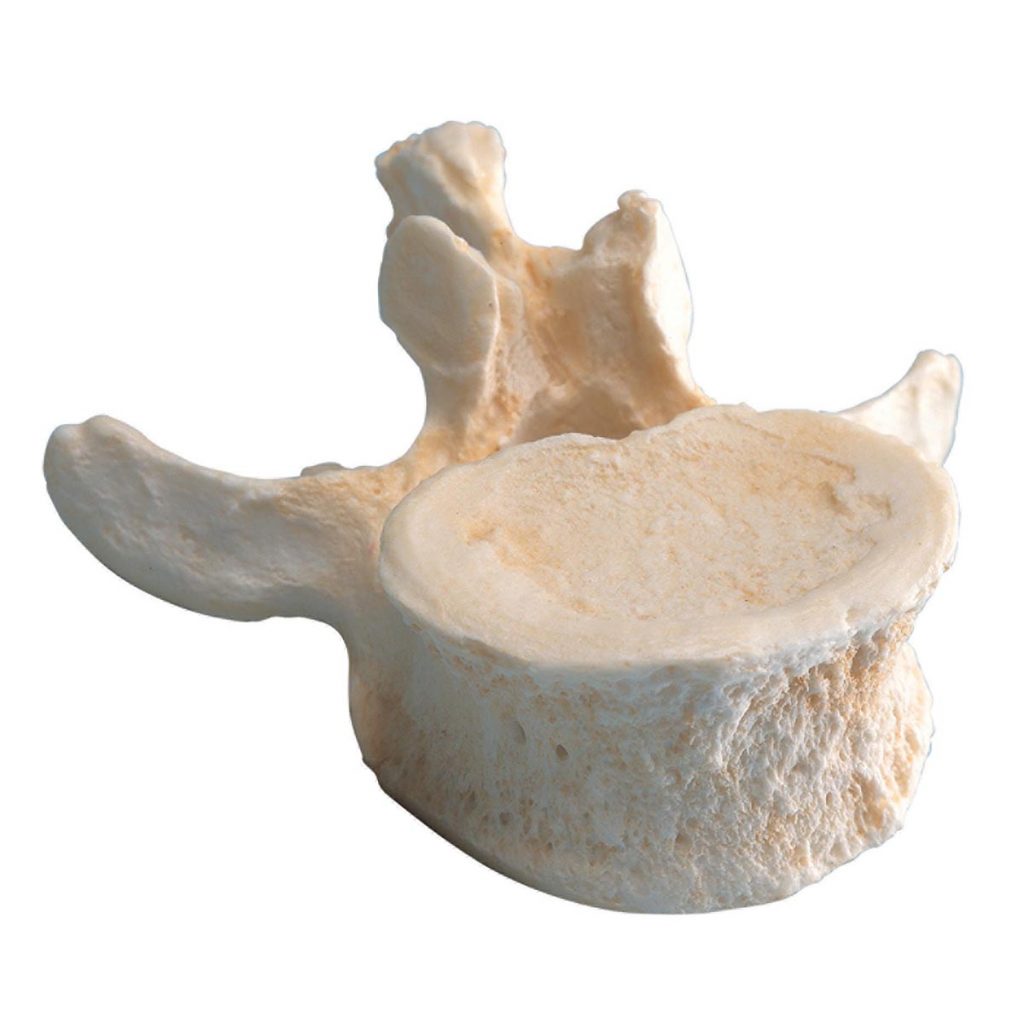Article reviewed and approved by Dr. Ibtissama Boukas, physician specializing in family medicine
What is the vertebral body? This article explains everything you need to know about this component of the spine.
Definition and anatomy of the vertebral body
Before talking about the vertebral body, it is worth briefly explaining the anatomy of the spine, and the vertebrae that compose it.
The vertebral column is made up of the juxtaposition of bones called vertebrae. Also called rachis, it is separated as follows:
- 7 cervical vertebrae
- 12 thoracic (or dorsal) vertebrae
- 5 lumbar vertebrae
- 5 sacral vertebrae (forming the sacrum)
- 4 coccygeal vertebrae (fused)
Here is a visual diagram of the spine:
The vertebral body is a thick, oval-shaped segment of bone that forms the front of a vertebra. It is made of spongy bone tissue, and is surrounded by a protective layer of compact bone. With the pedicles and vertebral laminae, it allows protection of the spinal cord.
The upper and lower surfaces of the vertebral body are flat and rough. This allows the fixation of the vertebral discs which are between each vertebra.
Vertebral body pathologies
Since they are structures that undergo a lot of pressure and act as an important support, the vertebral bodies are susceptible to being the site of pathologies. For instance :
- Compression fractures (especially in patients with osteoporosis)
- Vertebral body angioma (rarely symptomatic)
- Vertebral body hemangioma
- Spondylolisthesis (advancement of the vertebral bodies)
- Schmorl's hernia
Treatments related to the vertebral body
Here are the treatments used in the presence of pathologies affecting the vertebral bodies:
- Immobilization and lumbar corset (in case of fracture)
- Vertebroplasty
- Kyphoplasty

